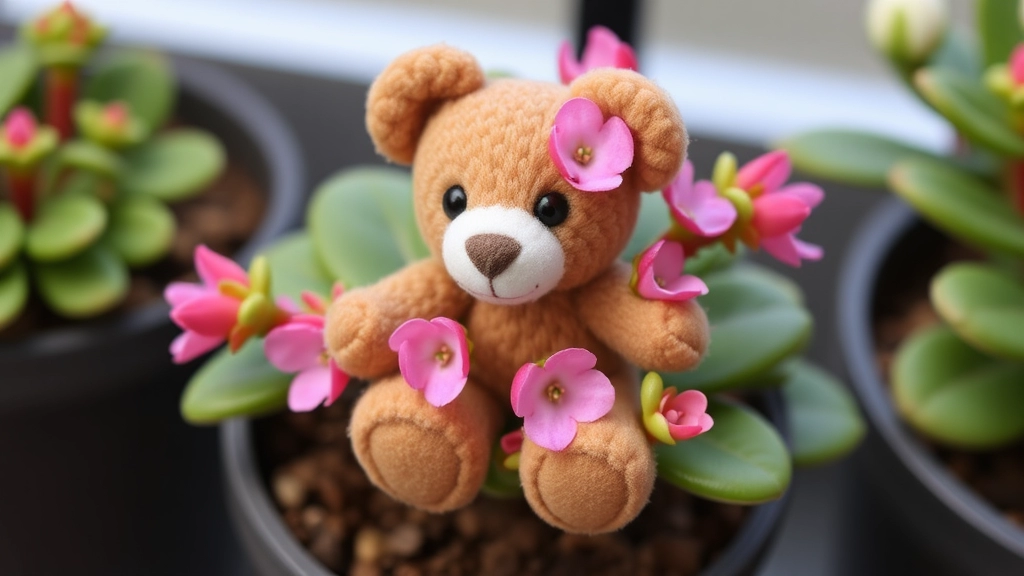Kalanchoe Tomentosa ‘Teddy Bear’
If you’re looking to add a touch of charm to your plant collection, the Kalanchoe Tomentosa ‘Teddy Bear’ is a must-have. This unique succulent, known for its fuzzy, teddy bear-like leaves, is not only adorable but also relatively easy to care for. In this guide, I’ll walk you through everything you need to know to grow, care for, and propagate your very own Teddy Bear succulent.
From optimal growing conditions to watering guidelines, we’ll cover all the essential tips to ensure your Kalanchoe Tomentosa thrives. Whether you’re a seasoned plant enthusiast or a newbie, you’ll find practical advice on soil requirements, sunlight preferences, and even creative ways to display your Teddy Bear succulent indoors. Let’s dive in and get your succulent journey started!
Are you looking for a unique succulent to brighten up your indoor garden?
Kalanchoe Tomentosa, commonly known as the ‘Teddy Bear’ succulent, is an excellent choice.
This charming plant features fuzzy, velvety leaves adorned with distinctive brown edges, resembling the soft fur of a teddy bear.
Key Features:
– **Appearance**: Thick, oval leaves with a soft texture.
– **Growth Habit**: Typically grows up to 30 cm tall, making it perfect for both pots and gardens.
– **Flowers**: Produces stunning tubular flowers, usually in vibrant yellow or orange hues during its blooming season.
The ‘Teddy Bear’ succulent is not just visually appealing; it’s also relatively low-maintenance, making it suitable for both beginners and seasoned plant enthusiasts alike.
Benefits of Growing Teddy Bear Succulents:
– **Air Purification**: Helps improve indoor air quality.
– **Drought Tolerance**: Requires minimal watering, ideal for busy lifestyles.
– **Versatile Display**: Works well in various settings, from homes to offices.
For more detailed care tips, check out our [Succulent Kalanchoe Tomentosa Care Tips and Growing Guide](https://planthq.org/succulent-kalanchoe-tomentosa-care-tips-and-growing-guide/). If you’re interested in exploring other varieties, visit our guide on [Kalanchoe Tomentosa Varieties, Care, Types, and Propagation](https://planthq.org/kalanchoe-tomentosa-varieties-care-types-and-propagation/).
Optimal Growing Conditions for Teddy Bear Succulents
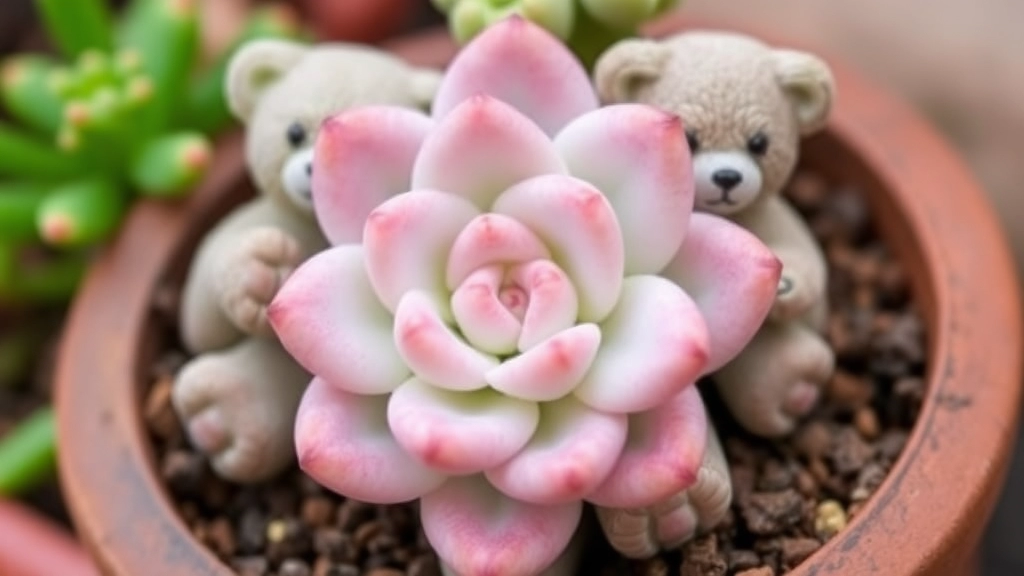
So, you’re keen on nurturing your Kalanchoe Tomentosa ‘Teddy Bear’? Great choice! These charming succulents are not just adorable; they thrive when given the right conditions.
Light Conditions
- Bright, Indirect Light: Teddy Bears love light but can get sunburnt. Aim for a spot with bright, indirect sunlight.
- Avoid Direct Sun: Too much sun can scorch those fuzzy leaves.
Temperature Preferences
- Warmth is Key: These guys prefer temperatures between 18°C to 24°C (65°F to 75°F).
- Watch for Cold: They’re not fans of frost, so keep them indoors during chilly months.
Humidity Levels
- Low Humidity: Teddy Bear succulents thrive in dry conditions. High humidity can lead to rot, so keep it low.
Air Circulation
- Good Ventilation: Ensure the area has decent airflow. This helps prevent mold and pests.
A Little Story
I once had a Teddy Bear succulent that I placed too close to a window. It got a bit too much sun and started to look sad. Once I moved it a few feet back, it perked right up!
By providing the right light, temperature, and humidity, you’ll set your Teddy Bear up for success.
Soil Requirements and Fertilization Tips
When it comes to nurturing Kalanchoe Tomentosa ‘Teddy Bear’, selecting the right soil is crucial for promoting healthy growth. You might be wondering, “What type of soil does my Teddy Bear succulent need?”
Soil Composition
The ideal soil for Teddy Bear succulents should be well-draining to prevent root rot. Here are some key points to consider:
- Cactus Mix: A pre-packaged cactus mix is often a great choice as it is formulated for succulents.
- DIY Mix: For a DIY option, combine equal parts of potting soil, coarse sand, and perlite. This blend enhances drainage while retaining some moisture.
- pH Level: Aim for a slightly acidic to neutral pH, ideally between 6.0 and 7.0.
Fertilization Tips
While Teddy Bear succulents are not heavy feeders, they can benefit from occasional fertilization. Here’s how to do it:
Watering Guidelines to Prevent Overwatering
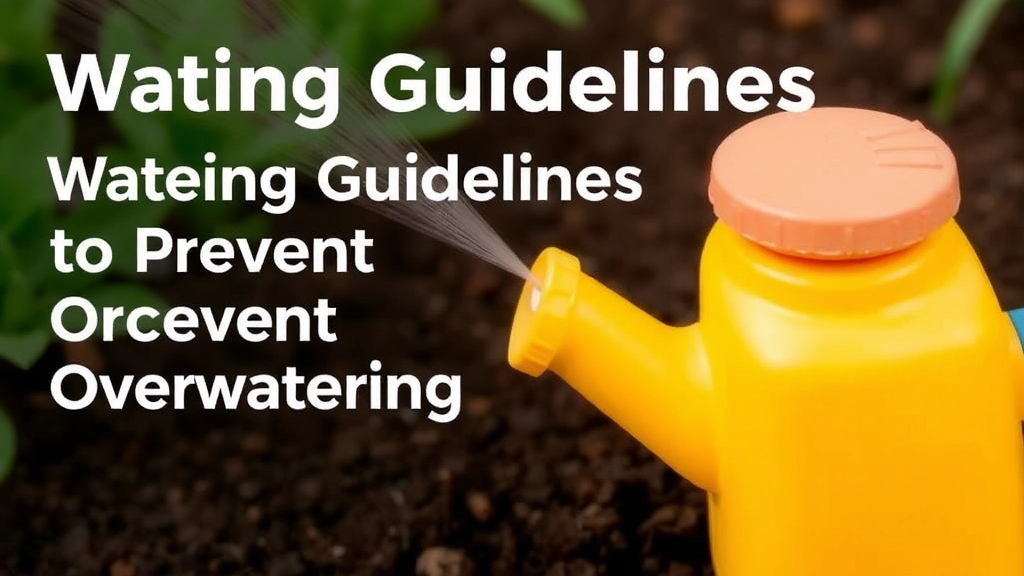
When it comes to caring for your Kalanchoe Tomentosa ‘Teddy Bear’, one of the most pressing concerns is watering. Overwatering can lead to root rot, a common issue that can quickly turn your vibrant succulent into a wilted mess.
Understanding Watering Needs
- Frequency: Water your Teddy Bear succulent every 2-3 weeks during the growing season (spring and summer). In the cooler months, reduce this to once a month.
- Soil Dryness: Always check the soil before watering. Stick your finger about an inch into the soil; if it feels dry, it’s time to water. If it’s still moist, wait a few more days.
- Watering Technique: When you do water, do so thoroughly. Ensure water seeps out of the drainage holes at the bottom of the pot. This guarantees that the roots are receiving adequate moisture.
Signs of Overwatering
- Yellowing Leaves: If you notice the leaves turning yellow and mushy, it’s a clear sign of overwatering.
- Wilting: Surprisingly, overwatered plants can also appear wilted. This is often due to root damage.
- Foul Odour: A rotten smell from the soil indicates root rot, necessitating immediate action.
Tips to Avoid Overwatering
- Use Well-Draining Soil: A mix specifically designed for succulents can help prevent moisture retention.
- Choose the Right Pot: Ensure your pot has drainage holes to allow excess water to escape.
- Seasonal Adjustments: Adjust your watering schedule based on seasonal changes. During winter, your plant’s water needs decrease significantly.
When it comes to caring for Kalanchoe Tomentosa ‘Teddy Bear’, understanding its sunlight and temperature preferences is essential for healthy growth.
### Sunlight Needs:
– **Bright, Indirect Light:** Teddy Bear succulents thrive best in bright, indirect sunlight. Direct sunlight can scorch their fuzzy leaves.
– **Ideal Location:** A south-facing window is perfect, but if you notice the leaves turning yellow, it might be getting too much sun.
– **Gradual Acclimation:** If you’re moving your plant outdoors for the summer, acclimatise it gradually to prevent shock.
### Temperature Preferences:
– **Optimal Range:** These succulents prefer temperatures between 20°C to 25°C (68°F to 77°F) during the day.
– **Nighttime Temperatures:** Nights should ideally be cooler, around 10°C to 15°C (50°F to 59°F).
– **Avoid Frost:** Teddy Bear succulents are not frost-tolerant. Protect them from temperatures below 5°C (41°F).
### Tips for Temperature Control:
– **Indoor Placement:** Keep them away from drafts and heating vents to maintain a stable environment.
– **Outdoor Care:** If placed outside, ensure they have some shade during the hottest parts of the day.
For more detailed care instructions, you might find our [succulent Kalanchoe Tomentosa care tips and growing guide](https://planthq.org/succulent-kalanchoe-tomentosa-care-tips-and-growing-guide/) helpful. If you’re interested in learning about the ideal temperature for Kalanchoe Blossfeldiana growth, check out our [complete guide](https://planthq.org/ideal-temperature-for-kalanchoe-blossfeldiana-growth/).
Common Pests and How to Address Them
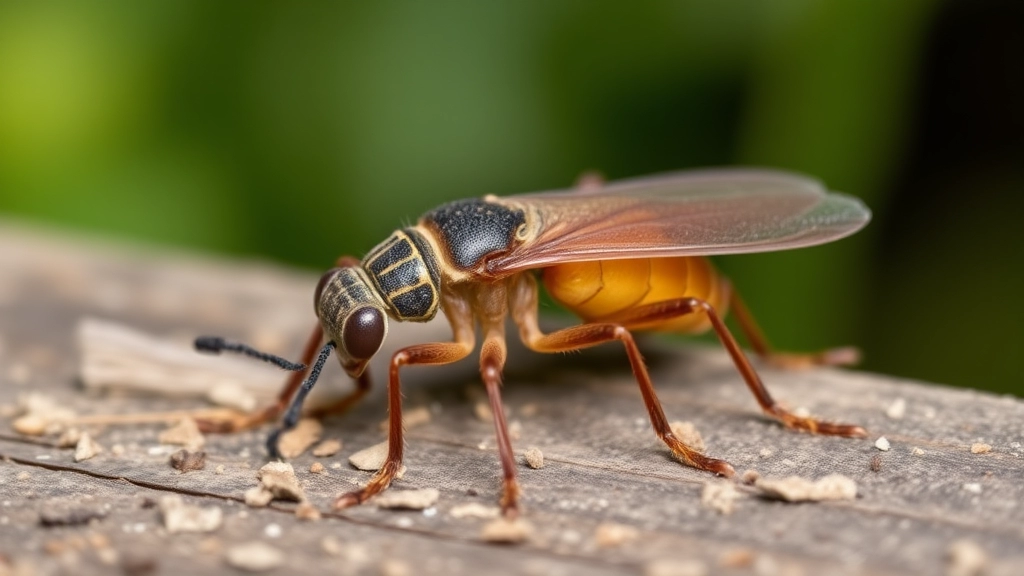
So, you’ve got your Kalanchoe Tomentosa ‘Teddy Bear’ thriving, but suddenly, you notice something off. Maybe there are little spots or fuzzy patches. What’s going on?
Identifying Common Pests
Your beloved Teddy Bear succulent can attract a few uninvited guests. Here’s a quick rundown of the usual suspects:
- Mealybugs: These tiny, white, cottony critters love to hide in the leaf joints.
- Aphids: Small, green or black bugs that suck the sap from your plant.
- Spider Mites: Tiny, spider-like creatures that create fine webs on the plant.
- Scale Insects: Little brown bumps that stick to the leaves and stems.
How to Tackle Them
Don’t panic! Here’s how to get your Teddy Bear back on track:
- Manual Removal: For mealybugs and scale, a cotton swab dipped in rubbing alcohol can do wonders. Just dab it on the pests to wipe them out.
- Insecticidal Soap: This is a great option for a more extensive infestation. Just spray it on the affected areas. It’s super effective and safe for your plant.
- Neem Oil: A natural pesticide that works wonders. Mix it with water and spray it on your plant. It not only helps with pests but also nourishes your Teddy Bear.
- Regular Checks: Make it a habit to inspect your plant weekly. Catching pests early makes all the difference.
- Keep it Clean: Dust can attract pests, so give your Teddy Bear a gentle wipe-down every now and then.
By staying vigilant, you can keep those pesky pests at bay and ensure your Kalanchoe Tomentosa ‘Teddy Bear’ remains healthy and happy.
When considering how to propagate Teddy Bear succulents, many enthusiasts often wonder about the best techniques to ensure successful growth. Fortunately, propagation is a straightforward process that can be immensely rewarding. Here are some effective methods to propagate your Kalanchoe Tomentosa ‘Teddy Bear’:
### Leaf Cuttings
– **Select Healthy Leaves:** Choose plump, healthy leaves from the parent plant.
– **Let Them Callous:** Place the leaves on a dry surface for 1-2 days to allow the cut ends to callous over.
– **Planting:** Once calloused, place the leaves on top of well-draining soil. Lightly press them down but do not bury them.
– **Water Sparingly:** Mist the leaves lightly to encourage root growth without overwatering.
### Offsets
– **Identify Offsets:** Look for small offsets or pups that grow around the base of the parent plant.
– **Remove Carefully:** Gently twist or cut the offsets away from the main plant, ensuring you retain some roots.
– **Planting:** Place the offsets in a pot with suitable soil, and water them lightly.
### Stem Cuttings
– **Choose a Healthy Stem:** Select a robust stem from the parent plant.
– **Cut and Callous:** Cut the stem about 4-6 inches long and allow it to callous for a few days.
– **Planting:** Insert the calloused end into the soil and water lightly.
### Tips for Success
– **Use Well-Draining Soil:** This prevents root rot and encourages healthy growth.
– **Provide Indirect Light:** Place the cuttings in a bright spot but avoid direct sunlight until they establish roots.
– **Be Patient:** It may take a few weeks for roots to develop, so patience is key.
For more detailed guidance on caring for your Kalanchoe Tomentosa, you can refer to the [Kalanchoe Tomentosa Varieties, Care, Types, and Propagation](https://planthq.org/kalanchoe-tomentosa-varieties-care-types-and-propagation/) guide. Additionally, if you’re interested in other propagation methods, the [Kalanchoe Tomentosa Propagation Guide](https://planthq.org/kalanchoe-tomentosa-propagation-guide-stepbystep-tips/) offers step-by-step tips.
Ideal Container and Potting Choices for Teddy Bear Succulents
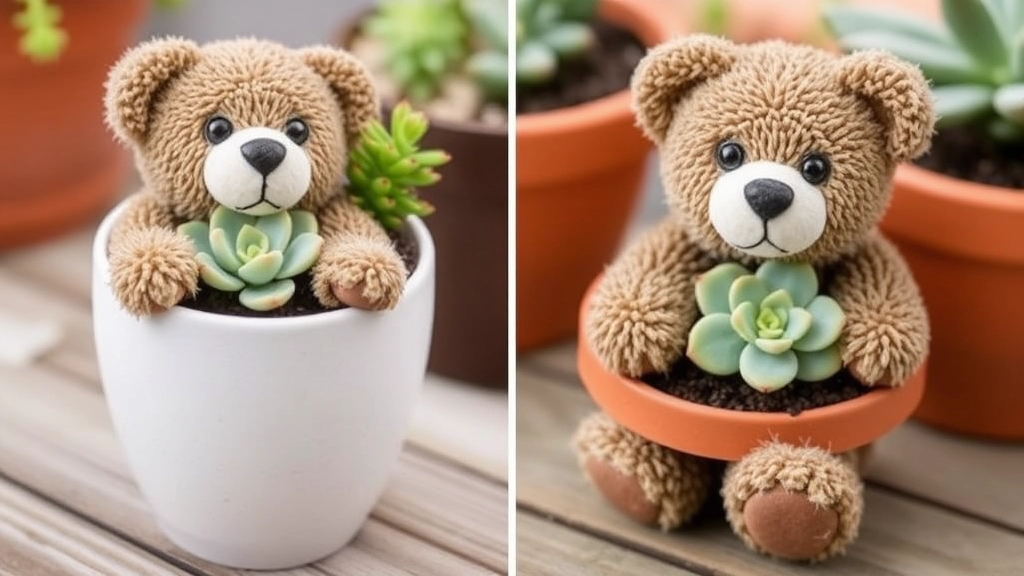
So, you’ve got your Kalanchoe Tomentosa ‘Teddy Bear’ and you’re probably wondering what pot to use. Choosing the right container is crucial for keeping your succulent happy and thriving.
Container Size Matters
Start with a pot that’s not too big.
- Small to Medium Size: A pot that’s about 4 to 6 inches in diameter is usually perfect.
- Avoid Overly Large Pots: Bigger pots can hold too much moisture, leading to root rot.
Drainage is Key
Make sure your pot has drainage holes.
- Why? Succulents hate sitting in water.
- Tip: If you find a pot you love that doesn’t have holes, consider using it as a decorative outer pot and place a smaller pot inside.
Material Choices
Think about the pot material as well.
- Terracotta: This is a top choice. It’s porous and helps wick away excess moisture.
- Ceramic: Great for aesthetics but ensure it has drainage holes.
- Plastic: Lightweight and easy to handle, but make sure it has good drainage.
Potting Mix
When it comes to soil, a well-draining mix is a must.
- Cactus Mix: This is usually a safe bet.
- DIY Mix: You can also make your own by mixing regular potting soil with sand and perlite.
Repotting Tips
Don’t forget about repotting!
- When: Every couple of years or when it outgrows its pot.
- How: Gently remove the plant and shake off old soil. Place it in fresh mix and water lightly.
Creative Indoor Display Ideas for Teddy Bear Succulents
After discussing how to care for your Teddy Bear succulents, let’s explore some creative ways to display these charming plants indoors.
1. Terrariums
- Glass Enclosures: Use a glass terrarium to create a mini ecosystem.
- Layering: Layer pebbles, activated charcoal, and soil for drainage and aesthetics.
- Mix and Match: Combine Teddy Bear succulents with other small plants for a vibrant display.
2. Hanging Planters
- Macramé Hangers: Elevate your succulents with stylish macramé hangers.
- Space Saving: Perfect for small spaces, they draw the eye upwards.
- Variety: Use different heights for a dynamic look.
3. Window Sills
- Sunlight: Place them on window sills where they can soak up sunlight.
- Grouping: Cluster several pots together for a fuller effect.
- Decorative Pots: Choose colourful or patterned pots to enhance visual appeal.
4. Shelving Units
- Layering Heights: Arrange on multi-tiered shelves for an attractive display.
- Contrast: Mix with books or other decorative items for contrast.
- Seasonal Decor: Change the arrangement with the seasons for freshness.
5. Desk Accents
- Work Environment: Brighten your workspace by placing a Teddy Bear succulent on your desk.
- Small Pots: Opt for smaller pots that fit neatly into your workspace.
- Mood Booster: The greenery can enhance your mood and productivity.
6. Creative Containers
- Repurposed Items: Use unique containers like teacups, tins, or wooden crates.
- Personal Touch: This adds a personal touch and tells a story.
- DIY Projects: Consider painting or decorating plain pots.
7. Gallery Walls
- Plant Frames: Create a living wall by mounting framed planters.
- Artistic Touch: Incorporate art and plants for a unique gallery feel.
- Visual Interest: This draws attention and adds depth to your space.
Landscaping Uses for Teddy Bear Succulents
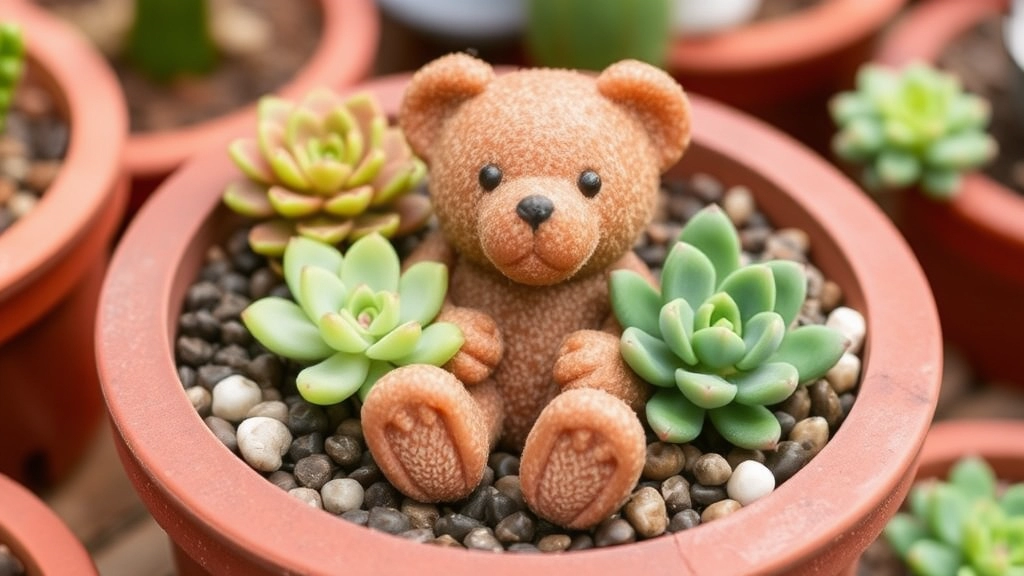
So, you’re looking to spruce up your garden or indoor space with some unique plants? Teddy Bear succulents are not just adorable; they’re also incredibly versatile in landscaping.
Perfect for Drought-Tolerant Gardens
These little cuties thrive in dry conditions, making them ideal for:
- Xeriscaping: If you live in a hot, dry climate, Teddy Bear succulents can really shine. They require minimal water, which is a win for both your garden and your water bill.
- Rock Gardens: Their fuzzy leaves add texture and interest. Pair them with stones and other succulents for a stunning display.
Container Gardening
Got a small space? No worries! Teddy Bear succulents are perfect for:
- Patios and Balconies: Use decorative pots to create a charming outdoor oasis.
- Windowsills: They thrive indoors, so why not bring a bit of nature inside?
Ground Cover
Looking for a low-maintenance ground cover?
- Fill Empty Spaces: They spread out nicely and can fill in gaps between other plants.
- Border Plants: Use them along pathways or garden edges for a soft, inviting look.
Indoor Decor
Teddy Bear succulents aren’t just for the garden.
- Desk Accessories: They make for quirky desk companions, brightening up any workspace.
- Living Arrangements: Combine them with other plants for a vibrant indoor display.
Attracting Pollinators
While they’re not the main attraction, these succulents can still play a role in your garden’s ecosystem.
- Bees and Butterflies: Their flowers can attract these lovely pollinators, supporting local wildlife.
When it comes to caring for Kalanchoe Tomentosa ‘Teddy Bear’ succulents, understanding how to adapt their care to various climates is crucial.
### Teddy Bear Succulents and Climate Adaptation
These charming plants can thrive in a range of environments, but they do require specific adjustments based on local weather conditions. Here are some key considerations:
#### 1. Hot and Dry Climates
– **Watering:** Reduce watering frequency. Allow the soil to dry out completely between watering sessions.
– **Sun Exposure:** Provide partial shade during the hottest part of the day to prevent leaf scorch.
– **Humidity:** Ensure good air circulation to avoid excess moisture, which can lead to rot.
#### 2. Cold and Frost-Prone Areas
– **Indoor Care:** If temperatures drop below 10°C (50°F), bring your Teddy Bear indoors.
– **Protection:** Use frost cloths or move them to a sheltered location during cold snaps.
– **Soil Drainage:** Ensure the pot has excellent drainage to prevent root rot in damp, cold conditions.
#### 3. Humid Environments
– **Air Circulation:** Position them in a location with good airflow to prevent fungal diseases.
– **Watering:** Be cautious with watering; only water when the top inch of soil is dry.
– **Soil Type:** Use a gritty, well-draining soil mix to help manage moisture levels.
#### 4. Tropical Climates
– **Shade:** Provide partial shade during the hottest months to avoid sunburn.
– **Fertilization:** Use a diluted, balanced fertilizer during the growing season to support healthy growth.
– **Pest Management:** Keep an eye out for pests, as warmer climates can attract unwanted visitors.
For more detailed care instructions, you might find the [Kalanchoe Tomentosa Care Guide](https://planthq.org/kalanchoe-tomentosa-cinnamon-care-growth-propagation-guide/) helpful. Additionally, if you’re interested in propagating your Kalanchoe Tomentosa, check out this [Propagation Guide](https://planthq.org/kalanchoe-tomentosa-propagation-guide-stepbystep-tips/).
Troubleshooting Common Growth Problems
Have you ever noticed your Teddy Bear succulent looking a bit off? You’re not alone! Many succulent lovers face common growth issues that can be frustrating.
Yellowing Leaves
What It Means:
If your leaves are turning yellow, it might be a sign of overwatering. These little guys are sensitive to soggy soil.
What to Do:
- Check the soil moisture.
- If it’s wet, let it dry out completely before watering again.
- Consider repotting into dry, well-draining soil.
Stretching or Leggy Growth
What It Means:
If your Teddy Bear is stretching towards the light, it’s not getting enough sun.
What to Do:
- Move it closer to a bright window.
- If possible, rotate the plant occasionally to ensure all sides get sunlight.
Dropping Leaves
What It Means:
Leaves dropping can indicate stress from temperature changes or pests.
What to Do:
- Keep your plant in a stable environment.
- Check for pests like mealybugs or aphids.
- Wipe the leaves with a damp cloth to remove any intruders.
Brown Tips
What It Means:
Brown tips usually signal underwatering or too much direct sunlight.
What to Do:
- Adjust your watering schedule.
- If it’s getting too much sun, move it to a spot with filtered light.
Root Rot
What It Means:
This is a serious issue caused by overwatering, leading to mushy roots.
What to Do:
FAQs About Kalanchoe Tomentosa ‘Teddy Bear’
What are the optimal light conditions for Teddy Bear succulents?
Bright, indirect light is ideal for Teddy Bear succulents. Avoid direct sun as it can scorch the leaves.
What temperature range is best for Kalanchoe Tomentosa ‘Teddy Bear’?
These succulents prefer temperatures between 18°C to 24°C (65°F to 75°F). They are not fans of frost, so keep them indoors during chilly months.
How often should I water my Teddy Bear succulent?
Water every 2-3 weeks during the growing season (spring and summer) and reduce to once a month in cooler months. Always check soil dryness before watering.
What are the signs of overwatering in Teddy Bear succulents?
Signs include yellowing leaves, wilting, and a foul odor from the soil, indicating root rot.
What type of soil is best for Teddy Bear succulents?
A well-draining soil mix, such as cactus mix or a DIY mix of regular potting soil with sand and perlite, is ideal.
What pests commonly affect Teddy Bear succulents and how can I address them?
Common pests include mealybugs, aphids, spider mites, and scale insects. Use manual removal, insecticidal soap, or neem oil to tackle them.
What is the best pot size and type for Teddy Bear succulents?
A pot that’s about 4 to 6 inches in diameter is usually perfect. Ensure the pot has drainage holes to avoid moisture retention.
How can Teddy Bear succulents be used in landscaping?
They are perfect for xeriscaping, rock gardens, container gardening, and as ground cover. They also make great indoor decor and can attract pollinators like bees and butterflies.
How often should I repot my Teddy Bear succulent?
Repot every couple of years or when the plant outgrows its pot. Gently remove the plant, shake off old soil, place it in fresh mix, and water lightly.
What humidity levels are ideal for Teddy Bear succulents?
They thrive in low humidity. High humidity can lead to rot, so keep the environment dry.
Why is good air circulation important for Teddy Bear succulents?
Good ventilation helps prevent mold and pests, ensuring the plant remains healthy.
References
-
How to Grow Kalanchoe Tomentosa Indoors
-
Kalanchoe tomentosa ‘Panda Plant’
-
Kalanchoe Tomentosa Care: Tips For Growing Panda Plant
